Planting strawberries on agrofibre

In order to grow good strawberries you will need a lot of effort and experience. Strawberries require careful care: watering, removing strawberry tendrils, shelving, loosening, pest control, soil mineralization, etc.
Content:
All gardeners want to reap a large harvest while spending a minimum of effort and financial resources. In ordinary soil, weeds grow with incredible force. My neighbor at the dacha advised me to plant strawberries on agrofibre. Thanks to agrofibre, I realized that in order to grow good strawberries, you don’t need to spend a lot of effort.
To get started, you will need a shovel, agrofibre, a sharp knife, bricks, stones or something similar, strong wire and the strawberries themselves.
Selection of agrofibre
Agrofibre comes in different densities, colors and purposes. You can buy it at any garden store. For strawberries, black agrofibre works best. Its density should be 60g/m2. If your strawberries grow in very unfavorable natural conditions, you should choose white agrofibre with a density of 17 g/m2. This agrofibre perfectly protects from excessive sun, heavy rain, and also from birds. To protect against frost, white agrofibre is also used, but with a higher density - 60g/m2. Calculate the area of the garden bed and go to the store.
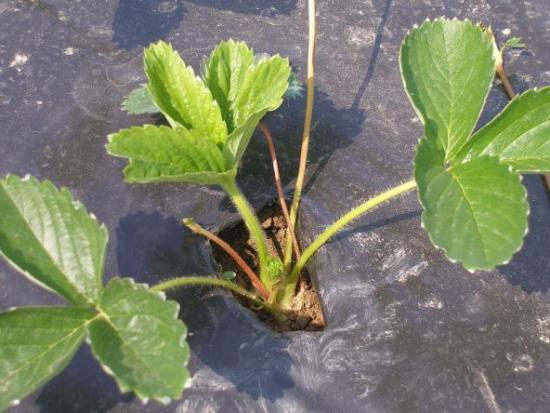
Now you can begin a detailed description of planting strawberries.
Arranging a garden bed
The first stage is arranging the garden bed
- First you need to determine the place where you want grow strawberries. The place should be sunny and high. Strawberries are very sensitive to excessive watering, heavy rain and groundwater. You should also choose flat places with minimal slope.
- Having outlined the beds, we begin digging and loosening the soil. When digging, it is necessary to remove roots, weeds and other foreign objects. The soil should be fertilized as best as possible. Humus, wood ash and others are perfect for this. mineral fertilizers. Garden store salespeople will tell you which ones. The soil needs to be properly leveled, because you definitely won’t be digging it up for 3 years.
- We lay agrofibre on the cultivated bed in accordance with its shape. Agrofibre should be laid overlapping. It is best for the overlap to be about 20 cm.
- Along the contour of the bed we press the agrofibre to the ground. Any stones, bricks, or other heavy objects you have on hand will do the trick to get you started.
- Now the agrofibre needs to be secured to the ground with wire. The wire needs to be cut into pieces 70 cm long, and each piece should be bent in half. You will get a pin with which we will pin the agrofibre to the ground. The bed is ready.
Planting strawberries
The second stage - planting strawberries on agrofibre
- Let's outline the location of each bush in the garden bed. Remember, you need to reach each bush without unnecessary effort. So leave distance between themso that there is an opportunity to walk or stand on the bed. It is best to make a path from paving slabs, for example, or ordinary boards. Otherwise, agrofibre will quickly lose its functionality.
- In the designated places we make a cut with a knife in the form of a cross. Use a sharp knife to avoid damaging the surface.
- We turn away the corners of the cross and place a strawberry bush there, the corners need to be turned inward. There is no need to plant strawberries deep into the ground. But if your seedlings are from pots, then you should make the hole deeper.
- After planting all the bushes, the strawberries need to be watered. In the future, it is best to water using a hose with a special nozzle to irrigate the strawberries. When watering in this way, moisture is perfectly retained under the agrofibre.
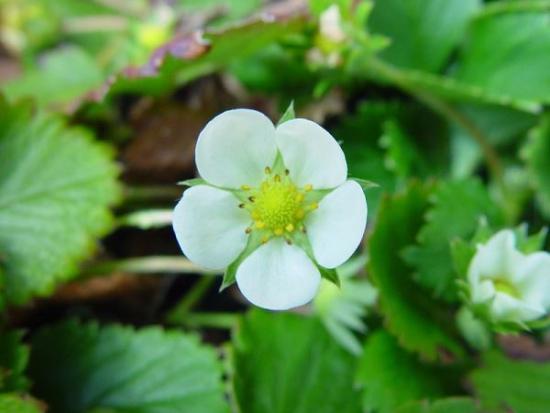
Planting strawberries on agrofibre is completed. You need to care for such a bed like an ordinary one. But the process itself will become much easier, thanks to agrofibre, and there will be more harvest. There are no weeds, the “whiskers” practically do not grow, no harmful garden dwellers They do not live on strawberries. The berry picking itself will become much more enjoyable - the berries are clearly visible and can be served immediately.
After all, agrofibre helps protect the berries from the layer of soil, which is especially important during the rainy season. And next year you don’t have to worry about the strawberries - the bed under the agrofibre will easily survive the frosts in winter.

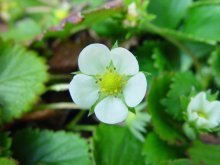

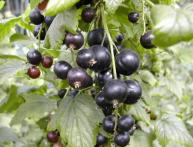
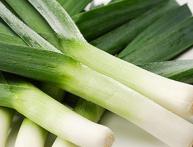
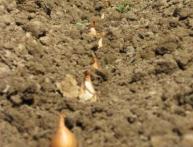
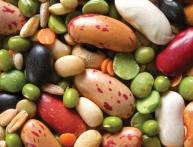
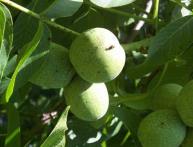
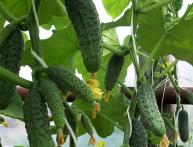
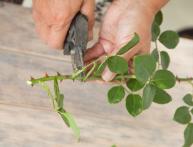
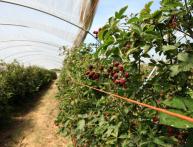
Comments
Great way to grow. I don't like. when strawberries lay their berries on the ground. It is inconvenient to water when it rains and the berries are dirty. When we planted strawberries on the agricultural canvas, we have no problems with the purity of the berries, with weeding, and almost no weeds grow.
Yes, as far as the berries being clean, that’s very good. After all, my children in the village usually eat strawberries straight from the garden. And this way, at least less dirt will get in) The most important thing is to protect it from weeds.
Agrofibre is more convenient than films that were used before.In contrast, agrofibre, like any non-woven material, “breathes” and allows moisture to pass through, so there are no problems with watering, and puddles of water do not stagnate. And the garden bed looks neat.
This method of planting strawberries interested me. What other name could agrofibre have? Would geotextiles, for example, be suitable? I doubt that our sellers call it that way. Actually, I saw non-woven materials, but in hardware stores, and only in white.
I read your article back in the spring, but only now decided to write a review. Before planting strawberries, I looked for articles on how to plant better, how to fight weeds and improve the harvest. Thanks to your article, I decided to try planting strawberries on agrofibre. Based on your recommendation, I bought black agrofibre with a density of 60g/m2 in the online store. I'm happy with the results, there are no weeds, the strawberries are clean and easier to care for. Thank you for being so detailed and wonderful. article.
!
in the section “arrangement of the bed” you write that the soil needs to be properly leveled, because you will definitely not dig it up for 3 years. Why? does this mean that agrofibre can be used for three years in a row?
in the section “arrangement of the beds” you indicated that it is necessary to carefully level the soil for 3 years in advance. does this mean that agrofibre can be used for 3 years? and not even rent for the winter?